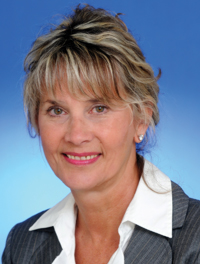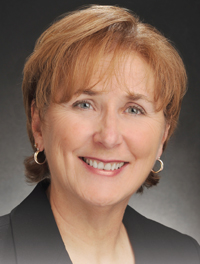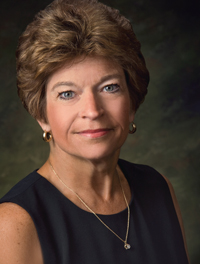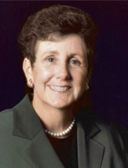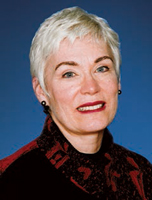
Margaret “Peg” Walsh, RDH, MS, MA, EdD, (deceased) was one of dental hygiene’s most prolific researchers. She authored more than 100 scientific articles and received more than $10 million in grants from the National Institutes of Health (NIH) and the state of California. Walsh conducted studies on topics ranging from tobacco cessation to the use of fluoride varnish in federally qualified medical clinics to prevent caries among low-income children. Through the development of educational materials to assist dental and medical professionals in helping individuals quit tobacco, she played a significant role in the decline of tobacco use in the United States.
Active in academia, Walsh established the Master of Science in Dental Hygiene program at the University of California, San Francisco (UCSF) School of Dentistry. She also served as director of the master’s program and as a professor in the UCSF School of Dentistry’s Department of Preventive and Restorative Dental Sciences.
Walsh was also co-author of the textbook Dental Hygiene Theory and Practice, with the late Michele L. Darby, RDH, MS. Since 1995, the textbook has helped dental hygiene students learn how to incorporate evidence-based knowledge into their decision making. Walsh was the 2013 recipient, along with Darby, of Dimensions of Dental Hygiene’s The Esther Wilkins Lifetime Achievement Award.
What is one of the most interesting research projects you’ve worked on and why?
This is a difficult question to answer because all of my research studies have been extremely interesting, and they all have made meaningful contributions to the public’s oral health. Since 1986, my primary research focus has been on tobacco use and cessation. I have served as the principal investigator of five large-scale, randomized-controlled intervention trials funded by the NIH and the California Tobacco-Related Disease Research Program. The tobacco prevention and cessation programs we developed and tested were community-based and used dental hygienists, school nurses, college athletic trainers, and student peer leaders in their delivery. These studies have been great fun and professionally rewarding because we identified effective low-intensive tobacco interventions and the conditions under which they can be provided efficiently in community-based settings.
If I have to choose a favorite research project, it would be the study in which we tested a peer-led and dental professional-directed smokeless tobacco prevention and cessation intervention program that targeted high school baseball athletes. The intervention had three components: training popular opinion leaders on the baseball team to lead a 1-hour educational session for their teammates; oral cancer screening exams for the entire team; and referral of all tobacco users to dental hygienists for tobacco cessation counseling. Both at the 1-year and 2-year follow-ups, quit rates were twice as high in the intervention group as in the control group. Data collected and program materials from this NIH/National Cancer Institute (NCI)-funded study were accepted by the NCI and the Substance Abuse and Mental Health Services Administration for inclusion on the NCI intervention program‘s website: cancercontrolplanet.cancer.gov.
Of which of your accomplishments are you most proud?
My work with Michele L. Darby, RDH, MS, in the development of a human needs conceptual model for dental hygiene care that resulted in the textbook Dental Hygiene Theory and Practice, which is now in its fourth edition, is the accomplishment for which I am most proud. The human needs conceptual model, or school of thought, defines dental hygiene’s four major paradigm concepts (client, environment, health and oral health, and dental hygiene actions) in terms of human need theory and provides a comprehensive, humanistic approach to the dental hygiene process of care. Human needs transcend age, culture, gender, and nationality. They connect the oral cavity with the total person and contribute to the quality of life of individuals, communities, and nations. The dental hygiene human needs conceptual model is unique to dental hygiene and distinguishes it from other disciplines, such as dentistry, nursing, psychology, and education. This distinction is important for the future of the profession.
Are there sufficient opportunities for dental hygienists in research? What can the profession do to encourage more dental hygienists to go into research?
There are many avenues for dental hygienists in research—especially those with master of science degrees—to collaborate as assistants/associates on projects conducted in private industry, universities, and practice-based clinical research networks. A good idea and proper research design and methodology, however, will only go so far, as a doctoral degree is required to become a principal investigator of a large-scale funded project.
The dental hygiene profession supports many initiatives to encourage research by dental hygienists. For example, the American Dental Hygienists’ Association (ADHA) provides funding for pilot studies and graduate education. It also includes research poster sessions and oral presentation as part of national and regional meetings. Moreover, the National Center for Dental Hygiene Research & Practice—under the leadership of Jane L. Forrest, RDH, EdD, and Ann Eshenaur Spolarich, RDH, PhD, at the University of Southern California Ostrow School of Dentistry in Los Angeles—has hosted three international research conferences in Bethesda, Maryland, that bring together dental hygiene researchers and educators from around the world to discuss the application of research in plenary sessions, small groups, and workshops. This conference is held in collaboration with the ADHA, the Canadian Dental Hygienists’ Association, and with support from the American Dental Education Association, as well as private industry.
Nevertheless, I would like to see the ADHA and other dental hygiene professional associations increase their support for the development and testing of conceptual models of oral disease prevention and health promotion from the dental hygiene perspective. These models then would guide dental hygiene research, education, and practice. Supporting the development of conceptual models unique to dental hygiene would encourage researchers to envision the discipline as a whole, and to conceptualize theory central to the discipline as the basis for further knowledge development. It is critical that dental hygiene researchers ask and answer research questions central to the discipline while reaching across other fields. The findings would expand dental hygiene’s body of knowledge and contribute to interdisciplinary problem solving regarding oral health challenges faced nationally and around the world.
What is your vision for the next 100 years of dental hygiene?
Dental hygiene has a bright future, and now is an exciting time to be entering the profession. For many reasons, however, I believe the development of dental hygiene doctoral programs is the critical next step for dental hygiene as it begins its journey over the next 100 years.
The profession needs to encourage research that supports clinical practice, and dental hygienists in clinical practice need to inform researchers about the evidence necessary to support interventions to promote the public’s oral health. Dental hygiene doctoral programs would provide ample time (3 years to 5 years) for dental hygiene graduate learners to become well versed in a wide range of theories and research methodologies, while enabling them to develop an in-depth expertise in a specific theory and methodology to solve a problem of interest. The knowledge gained in research methodology courses would be augmented with a critical understanding of the dental hygiene discipline’s research priorities, in conjunction with learning how interdisciplinary approaches can be used to address these priorities. Such programs would also offer the opportunity for graduate learners to learn how to write research grants for funding to test innovative strategies to increase access to oral health care services.
Dental hygiene doctoral programs also would provide time for graduate learners to participate in residencies and various research projects. These experiences provide breadth and depth for the developing dental hygiene researcher identity. Dental hygienists who have the motivation and potential to become future dental hygiene scholars and scientists are entitled to an academic experience similar to doctoral students in other disciplines as they pursue their journey toward a scholarly future.
Given the oral health challenges facing the nation, doctoral-prepared dental hygiene scholars and advanced practitioners are needed to bring the discipline’s perspective to the problem-solving table and to patient care. Challenges, such as oral health disparities, the growing number of older adults with complex medical conditions, the current structure of the oral health care delivery system, and changing needs for different numbers and types of providers to help address problems—restrictive regulatory statutes; geographic, educational, and cultural barriers; and the need for capacity building to prepare academic leaders and educators in dental hygiene with interprofessional experience and expertise—all support the need for doctoral dental hygiene education.

